- Submissions

Full Text
Open Journal of Cardiology & Heart Diseases
Assessment of Stress in the Banking Environment at the National Service of Occupational Medicine in Guinea
Cisse A1, Barry IS2, Soumaoro M2, Samoura A2*, Camara A2, Toure D3, Alhouseine Y1, Samoura S2, Koivogui D2 and Ansoumane M1
1National Service of Occupational Medicine, Guinea
2Cardiology service, Chu Ignace Deen, Guinea
3Pulmonology Service, Chu Ignace Deen, Guinea
*Corresponding author: Vivek Kumar Garg, Demonstrator, Government Medical College and Hospital, India
Submission: February 10, 2020;Published: April 24, 2020

ISSN 2578-0204Volume3 Issue3
Summary
Introduction: Stress is the body’s response to an exhausting, dangerous or distressing situation. Work stress is a person’s reaction to high demands and pressure at work. The impact of work stress is generally considered to be harmful to workers’ health and costly for society. They seem to affect all categories of workers, including managers. Numerous scientific works agree that stress at work is at the origin of pathologies such as musculoskeletal disorders (MSDs) and low back pain, cardiovascular diseases (CVD), depression [1,2].
Patents and method: The national service of occupational medicine and twelve (12) banks of the city of Conakry and their branch are used as framework for the realization of this study.
Study material: Our study focused on all bank employees working in the city of Conakry.
A. Type and duration of study: This was a descriptive prospective study of a duration of 06
months from 10 June to 10 December 2017.
B. Population target: All employees of the banks of the city of Conakry were targeted.
C. Population study: Our study focused on all active employees of the banks of the city of Conakry.
D. Inclusion Criteria: Included in this study were all bank employees in Conakry present during
the survey who agreed to participate.
E. Exclusion Criteria: Excluded from this study were all bank employees who did not accept the
survey.
F. Variable: For all employees, we determined the sociodemographic parameters (age, sex,
marital status, workstation, residence) as well as the stress and stressor evaluation parameters.
G. Data entry and analysis: The seizure analysis and presentation of this study were carried out
using Pac Office 2013 and Epi Infos in version 7.2.1.0
H. Ethical and deontological considerations: An investigation authorization and the free
membership of employees to our investigation were requested and the information collected was
kept in the confidentiality required by professional secrecy.
Discussion: We conducted a descriptive prospective study on the assessment of stress in the workplace: the case of banks in Conakry in which we recorded 844 workers. The average age of our workers was 37.02 years with extremes of 20 and 72 years, the age group of 30 - 39 years was the most affected with a proportion of 45.14%, followed by that of 20-29 years with a proportion of 23.10%. Oke A et al. [3] In Nigeria in 2008, a study of stress in the banking sector reported that the most represented age group was 31 to 40 years old with a proportion of 49.7%. Petarli et al. [4] Brazil in 2015 reported in a study on stress in the banking sector, that the most represented age group was 31 to 50 years with a proportion of 62%.
Conclusion: Stress is the body’s response to an exhausting, dangerous or distressing situation. Then there is a statistically significant link between the level of stress and the stressors. The assessment of the factors intrinsic to the work situation would certainly make it possible to analyze the impact and possible corrective and preventive measures. As stressors are real risk factors for stress, conducting additional studies on stress in other sectors could lead to a better understanding of this phenomenon in order to prevent the occurrence of cardiovascular events.
Introduction
Stress is the body’s response to an exhausting, dangerous or distressing situation. Work
stress is a person’s reaction to high demands and pressure at work. The impact of work stress is generally considered to be harmful to workers’ health and costly
for society. They seem to affect all categories of workers, including
managers. Numerous scientific works agree that stress at work is at
the origin of pathologies such as musculoskeletal disorders (MSDs)
and low back pain, cardiovascular diseases (CVD), depression [1].
Other specific behavioral phenomena such as alcohol, tobacco
and psychoactive drug abuse are also more common in stressful
situations. This issue is all the more worrying as work stress
is a growing phenomenon, partly due to the emergence of new
technologies and the spread of new forms of work organization
[1]. Thus, stress is not only important from the medical and
psychological point of view, it is also important for the sciences
of the organization and the manager. Stress is so involved in the
functioning of organizations that it could almost be compared to
the function of energy in physics [2]. The scarcity of study on the
subject in the banking sector in our country, the need to make
better known the phenomenon and its risk factors have motivated
the choice of this topic entitled “Assessment of stress in banking at
the national service of medicine of work in Guinea.
Main Objective
To evaluate stress at work in the banking sector in Conakry.
Specific Objectives
A. Determine the level of stress of employees in banking
B. Describe the stressors in banking
C. Establish the relationship between the level of stress and
stressors in the banking sector.
Patents and method
The national service of occupational medicine and twelve (12) banks of the city of Conakry as well as their branch are used as framework for the realization of this study.
Study material
Our study focused on all bank employees working in the city of Conakry.
Support: A survey form developed according to the charly
Cungi model and a computer equipped with Pack office 2013
served as a support for data collection.
a. Type and duration of study: This was a descriptive
prospective study of 06 months duration, from June 10 to
December 10, 2017.
b. Target population: All bank employees in the city of
Conakry were targeted.
c. Study population: Our study focused on all active bank
employees in the city of Conakry.
d. Inclusion criteria: All bank employees in Conakry present
during the investigation and who agreed to participate were
included in this study.
e. Exclusion criteria: Excluded from this study were all bank
employees who did not accept the survey.
f. Data entry and analysis: The entry, analysis and
presentation of this study were carried out using Pac Office
2013 and Epi Infos in version 7.2.1.0
g. Ethical and deontological considerations: Authorization
to conduct an investigation and the free participation of
employees in our investigation were requested and the
information collected was kept in the confidentiality required
by professional secrecy.
Result
(Table 1-8) (Figure 1 & 2)
Table 1: Distribution of workers by age group.

Average age=37.02 years min=20 years max=72 years
Table 2:Distribution of workers by profession.
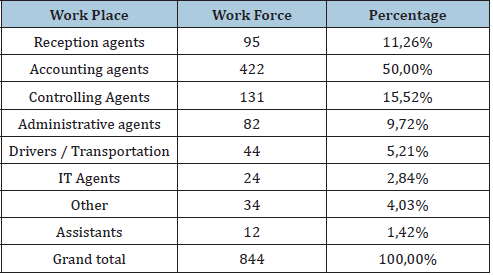
Table 3:Distribution of workers by stress level.

Table 4:Distribution of workers according to different stressors.
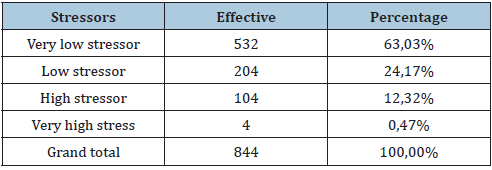
Table 5:Distribution of workers according to different stressors.

Table 6:Distribution of workers according to the relationship between stressors and stress.

OR = 3.63 IC [1.85 – 7.11] ; P-value = 0.0000
Table 7:Distribution of socio-demographic variables according to stress.
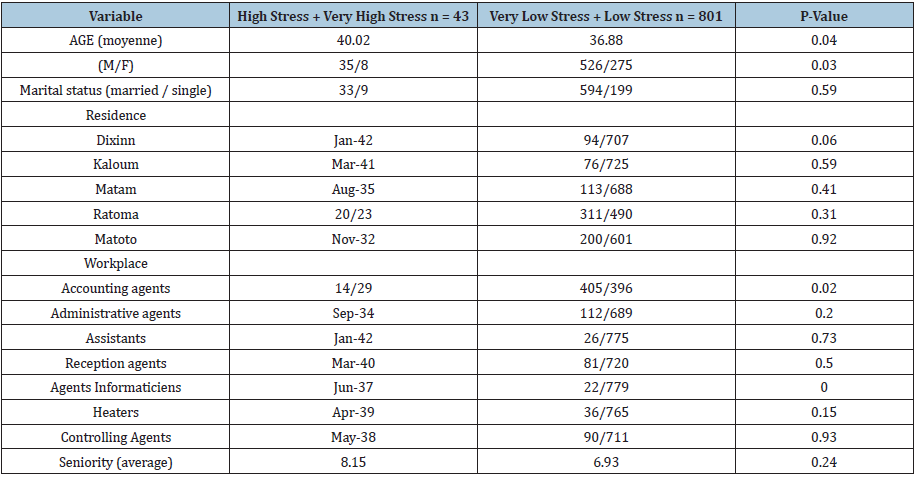
Table 8:Distribution of socio-demographic variables according to stressors.
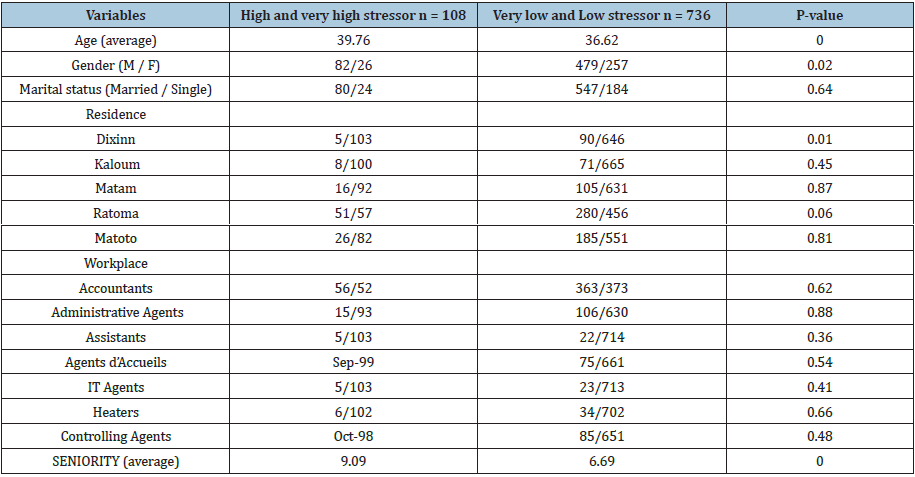
Figure 1:Distribution of workers by sex.
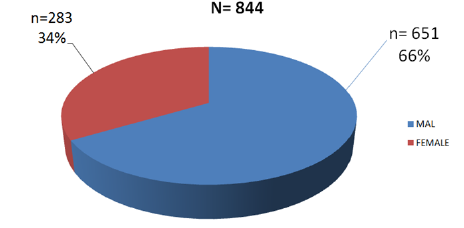
Sex-ratio = 1.98
Figure 2: Distribution of workers by seniority.

Average = 7 years min = 0.038 years (2 weeks) max = 29 years
Discussion
We carried out a prospective descriptive study on the evaluation
of stress in the workplace: the case of the banks in Conakry in which
we registered 844 workers. The average age of our workers was
37.02 years with extremes of 20 and 72 years, the age group of
30-39 years was the most affected with a proportion of 45.14%,
followed by that 20-29 years with a proportion of 23.10%. Oke A, et
al. [3] in Nigeria in 2008 reported in a study, on stress in the banking
sector, that the most represented age group was 31 to 40 years with
a proportion of 49.7%. Petarli et al. [4] in Brazil in 2015 reported
in a study, on stress in the banking sector, that the most represented
age group was 31 to 50 years with a proportion of 62%. Desouky A
et al. [5] in Egypt in 2017 had reported in a study, on teacher stress,
an average age of 39.4 years with the extremes of 21 and 58 years.
During this study, young adults are the most encountered. This
result could be explained by the fact that in recent years companies
and especially banks, in order to revitalize their activities, have
implemented a policy of rejuvenation of their workforce by
employing more and more young graduates. Among workers, men
were the most represented with 561 cases or 66% against 283 cases of female sex or 34% with a sex ratio of 1.98. Oke A et al. [3]
in Nigeria in 2008 who had reported in a study, on stress in the
banking sector, a male predominance of 62.7%. Petarli et al. [4]
in Brazil in 2015 who reported in a study, on stress in the banking
sector, a male predominance of 51%. This could be explained by
the fact that it is men who apply much more for employment. Also
the number of women in clear evolution would be explained by the
policy put in place by all the organizations to promote the female
candidates.
The seniority was 7 years with the extremes of 0.038 and 29
years, 51.54% 0 of the workers had a seniority of less than 5 years.
Oke A et al. [3] in Nigeria in 2008 who had reported in a study on
stress in the banking sector, 42% of employees had a seniority of
less than 05 years. Desouky D et al. [5] in Egypt in 2017 who had
reported in a study, on stress among teachers, 30.3% of employees
had a seniority of less than 05 years. The relatively low seniority
in this sector is linked on the one hand to the fact that most of the
predominantly young employees are at the start of their career. On
the other hand, the fact that the hiring and hiring process in these
sectors is fairly regular.
Accounting officers (cashier, etc.) are the most encountered
with a proportion of 50%, followed by controllers and reception
staff with the proportions of 15.52% and 11.26% respectively. Oke
A et al. [3] in Nigeria in 2008 who had reported in a study, on stress
in the banking sector, 36.7% of employees are accounting officers.
Petarli et al. [4] in Brazil in 2015 who had reported in a study, on
stress in the banking sector, 55% of employees are administrative
agents and 45% of agents. In the banking sector, the need for
human resources is much more accentuated on these workstations;
which explains the high number of employees in this field. In our
series, we evaluated stress and stressors according to the model
of Charly Cungi [6]; thus 5.09% of the workers had a high level of
stress (score between 30 and 45) against 50.47% and 44.43% who
respectively had a very low level of stress (score 11 and 19) and
low (score between 19 and 30). None of the workers had very high
stress levels.
Our data is comparable with that of: Oke A et al. [3] in Nigeria
in 2008 who had reported in a study, on stress in the banking
sector, that the most represented age group was 31 to 40 years
with a proportion of 49.7%. Petarli et al. [4] in Brazil in 2015
who had reported in a study, on stress in the banking sector, 58%
of employees had a low stress level and 41.7% had a high stress
level. Desouky D et al. [5] in Egypt in 2017 who had reported in
a study, on teacher stress, 67% of employees had a high level of
stress and 26.1% had a medium level of stress. Jeyaraj SS et al. [7]
in Indonesia in 2013 who had reported in a study, on teacher stress,
62% of employees had a medium level of stress and 17.7% had a
high level of stress. Mishra B et al. [8] in India in 2011 who had
reported in a study, on stress among teachers, 88.4% of employees
had a moderate level of stress and 5% had a high level of stress. As
for the stressors, 12.32% of the workers had a high stressor score
score between 18 and 28 against 63.03% and 24.17% who had
respectively a very low stressor score score between 8 and 14 and
low score between 14 and 18.The most encountered stressors are
regular work overload, family concerns.
Statistical analysis of this result reveals a statistically
significant relationship between the level of stress and the
stressors (p-value=0.00). The risk of being stressed in the presence
of stressors is 3.63 times greater than in workers who have a low
stressor score. Once again, this study shows that stressors are the
risk factors for stress. In our study, advanced age (p=0.04), gender
(p=0.03) and job position (accountants p = 0.02 and computer
scientists p = 0.00) are the factors that are linked to stress. Oke A
et al. [3] in Nigeria in 2008 who had reported in a study, on stress
in the banking sector, a correlation between age and stress as well
as seniority and stress. Petarli et al. [4] in Brazil in 2015 who had
reported in a study, on stress in the banking sector, a correlation
between marital status, job position, seniority and stress. Desouky
D et al. [5] in Egypt in 2017 who had reported in a study, on teacher
stress, a statistically significant link between sex, advanced age and
stress. Jeyaraj SS et al. [7]. In Indonesia in 2013 who had reported
in a study, on teacher stress, a statistically significant link between
gender, length of service and stress. This would be due to the fact
that responsibilities increase with age and that the demands of
certain jobs are stressful factors.
Conclusion
Stress is the body’s response to an exhausting, dangerous or distressing situation. So there is a statistically significant link between the level of stress and the stressors. The assessment of the factors intrinsic to the work situation would certainly allow the impact and possible corrective and preventive measures to be analyzed. As stressors are real risk factors for stress, carrying out additional studies on stress in other sectors could lead us to better understand this phenomenon in order to prevent the occurrence of cardiovascular events.
References
- (2007) Documentation and Information Service. The Stress Onet (14): 37.
- (2002) Information bulletin from the European trade union technical office for health and safety, BTS Newsletter Brussels n° 19-20: 5.
- Oke A, Dawson P (2008) Contextualizing workplace stress: The experience of bank employees in Nigeria.
- Petarli GB, Zandonade E, Salaroli LB, Bissoli NS (2015) Assessment of occupational stress and associated factors among bank employees in Vitoria, State of Espírito Santo, Brazil. Cien Saude Colet. 20(12): 3925-3934.
- Desouky D, Allam H (2017) Occupational stress, anxiety and depression among Egyptian teachers. J Epidemiol Glob Health 7(3): 191-198.
- Cungi C, Bouhana S, Dégoul G, Bibollet D. Two brief self-assessment scales for stressors and stress.
- Jeyaraj SS (2013) Occupational stress among the teachers of the higher secondary schools in Madurai District, Tamil Nadu. IOSR Journal of Business and Management 7(5): 63-76.
- Mishra B, Mehta S, Sinha ND, Shukla SK, Ahmed N, et al. (2011) Evaluation of Work Place Stress in Health University Workers: A study from rural India. Indian J Community Med 36 (1): 39-44.
© 2020 Samoura A. This is an open access article distributed under the terms of the Creative Commons Attribution License , which permits unrestricted use, distribution, and build upon your work non-commercially.
 a Creative Commons Attribution 4.0 International License. Based on a work at www.crimsonpublishers.com.
Best viewed in
a Creative Commons Attribution 4.0 International License. Based on a work at www.crimsonpublishers.com.
Best viewed in 







.jpg)






























 Editorial Board Registrations
Editorial Board Registrations Submit your Article
Submit your Article Refer a Friend
Refer a Friend Advertise With Us
Advertise With Us
.jpg)






.jpg)














.bmp)
.jpg)
.png)
.jpg)










.jpg)






.png)

.png)



.png)






